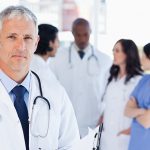Effective January 1, 2022, new and revised requirements related to resuscitation care became applicable to Joint Commission-accredited hospitals and critical access hospitals (CAHs). The requirements provided further strength in resuscitation and post-resuscitation care processes within hospitals by bringing the standards in closer alignment with contemporary guidelines and clinical evidence.
Lorna Dudzik, DNP, RN, APN, CNS, CEN is an assistant professor at the Lewis University College of Nursing and Health Sciences. Her 2019 study, Implementation of a Low-Dose, High-Frequency Cardiac Resuscitation Quality Improvement Program in a Community Hospital, focused upon the urgent need to improve in-hospital cardiac arrest survival through health care provider cardiopulmonary resuscitation (CPR) training via a novel competency-based model.
With the revised standards in effect, Lorna discusses the impact of the updated guidance and reflects upon her clinical research and direct care experiences:
Q: The revised standards address several factors critical to resuscitation performance, including the quality of hospital staff training, adherence to evidence-based protocols, collection of data, and the implementation of internal quality control and case review mechanisms. How does your real-life experience reinforce why CPR education and training is crucial?
A: Throughout my career as a nurse, I’ve been in my fair share of inpatient code blues. Every single one of these intense memories is amplified by the raw reality of the tremendous challenge and responsibility laid before us as rescuers – saving someone’s life means every single minute can make all the difference between life and death. We are that patient's last hope. The other aspect of witnessing in-hospital cardiac arrest (IHCA) resuscitation efforts is that far too often, I have walked away grappling with another harsh reality. In my experience, although we had the best of intentions, the truth is we have not always performed at the highest CPR skill level – and that is no small matter.
Q: The revised standards were developed to further reduce preventable variations in CPR practice and encourage hospitals to adopt proactive and responsive approaches to resuscitation and post-resuscitation care to maximize patient survival with the best possible neurological outcomes. Do you believe these updated guidelines will further encourage healthcare organizations to adopt more frequent training requirements for resuscitation education to combat skills decay?
A: Current literature is rich with robust evidence that healthcare providers (HCPs) CPR skills decay within weeks to months after the traditional biennial model of BLS training/certification. What also decays, or falsely inflates, is not as obvious to measure or quantify, but equally important: HCPs CPR skill confidence, a quiet inner knowledge that one is capable. I have also witnessed this phenomenon in code blue events, which is not as overt as actual poor skill performance of rescuers; however, powerfully related – HCPs sense of false bravado or lost confidence in performing CPR.
False confidence is deceptively dangerous and evidence demonstrates rescuers real world performance often falls short to save a life. There is a gross and precarious misconception regarding HCPs “self-perceived” confidence to perform high-quality CPR versus their actual hands-on performance – an insidious phenomenon of reality versus perception.
Regardless of which side of the confidence spectrum the HCP resides, without a solution, the effect will negatively impact vital CPR skill performance and result in detrimental outcomes for the cardiac arrest patient. Furthermore, inflated false confidence does not compensate for poorly deflated CPR skill performance – a perilous combination. CPR initiation, speed, confidence, and high-quality skills matter, bottom line.
Q: While resuscitation outcomes have improved nationally over the past two decades, survival after in-hospital cardiac arrest varies widely across and within hospitals. What do you believe is the overall significance of this updated standard? Will they contribute to improved patient outcomes and staff competencies?
A: In-hospital cardiac arrest events produce uniquely complex critical challenges in which HCPs’ performance, or lack thereof, can significantly alter patient survival rates. If not appropriately and effectively intervened upon within seconds and certainly minutes, the outcome and survivability dramatically declines. The arrested myocardium will not wait for the rescuer to recall the immediate and correct execution of lifesaving interventions, nor will it grant forgiveness if the rescuer forgets, pauses, or performs inadequately. Each second of rescuer apprehension, hesitancy, or incompetence will alter the fate of the cardiac arrest victim.
Over the last two decades, substantial research and compelling evidence have revealed high-quality CPR skills decay rapidly with traditional two-year certification. Compounding this concerning issue is that IHCA is considered a high-risk, low-volume hospital event. This creates a perfect storm of producing less than optimal CPR skills and devastating patient outcomes.
To think training in CPR once every two years will translate into confidence and competence in actual patients is not only unreasonable but unreachable. The bottom line is there is no place or acceptable excuse for dull, slow, or sloppy incompetence when it comes to executing lifesaving BLS skills - our patients deserve better. We must do better.
Q: As an academic researcher, you embarked on an in-depth study of the implementation of the RQI program within a community hospital while also witnessing the success of the program as a direct care provider. Your statistical analysis demonstrated that the RQI program provided measurable improvements in HCP’s CPR psychomotor competence and confidence/satisfaction using an efficient and sustainable method. How do you believe the RQI program could help organizations meet the revised standards?
A: To transform resuscitation practices, RQI embeds the proven elements of mastery learning cited in the AHA’s Resuscitation Education Science and Strategies to improve outcomes from cardiac arrest. RQI is the only program that requires quarterly CPR skill refreshers, which aligns with current resuscitation science education guidelines.
The design of RQI entails true adaptive learning, deliberate practice, and a quarterly blend of cognitive and skill assessment activities. Unlike the biennial instructor-led training (ILT) model, RQI produces low-dose, high-frequency mastery CPR learning and verified competence.
Since RQI’s debut in 2015, several research articles have been published to validate that the quarterly model of RQI meets the objectives of improving CPR performance quality, and HCP confidence to improve survival outcomes. Hospitals that implement the RQI program are not only meeting the updated 2022 Joint Commission resuscitation standards, but are also investing in the gold standard of resuscitation education for both their HCPs benefit and, most importantly, their patients.
From a practical standpoint, the differences between the conventional ILT model versus RQI are quite striking and vast. The advantages and benefits of RQI compared to the ILT model are also numerous and impressive. The RQI program provides perpetual certification for BLS, ACLS, and PALS. The ability for a hospital to transition from the ILT model to a higher standard of resuscitation education and training can occur seamlessly and effortlessly.
By adopting RQI, a hospital will not only ensure they are meeting the new Joint Commission resuscitation standards, but also elevate their staff’s ability to provide the highest level of patient quality and safety for IHCA events.
Lorna Dudzik, DNP, RN, APN, CNS, CEN is an assistant professor for the College of Nursing and Health Sciences at Lewis University in Romeoville, Illinois and a clinical consultant for RQI Partners. She also serves as an AHA ACLS/BLS Instructor and Get With The Guidelines® Resuscitation Data Abstractor for Edward Hospital in Naperville, Illinois.
Access The Joint Commission’s R3 Report (Issue 29) outlining the new and revised standards for resuscitation care here.
The Joint Commission does not endorse RQI or other commercial resuscitation approaches. Enrollment in and use of RQI does not in and of itself ensure compliance with applicable Joint Commission standards. RQI is not the only product or approach that can be used to meet Joint Commission resuscitation standards.







